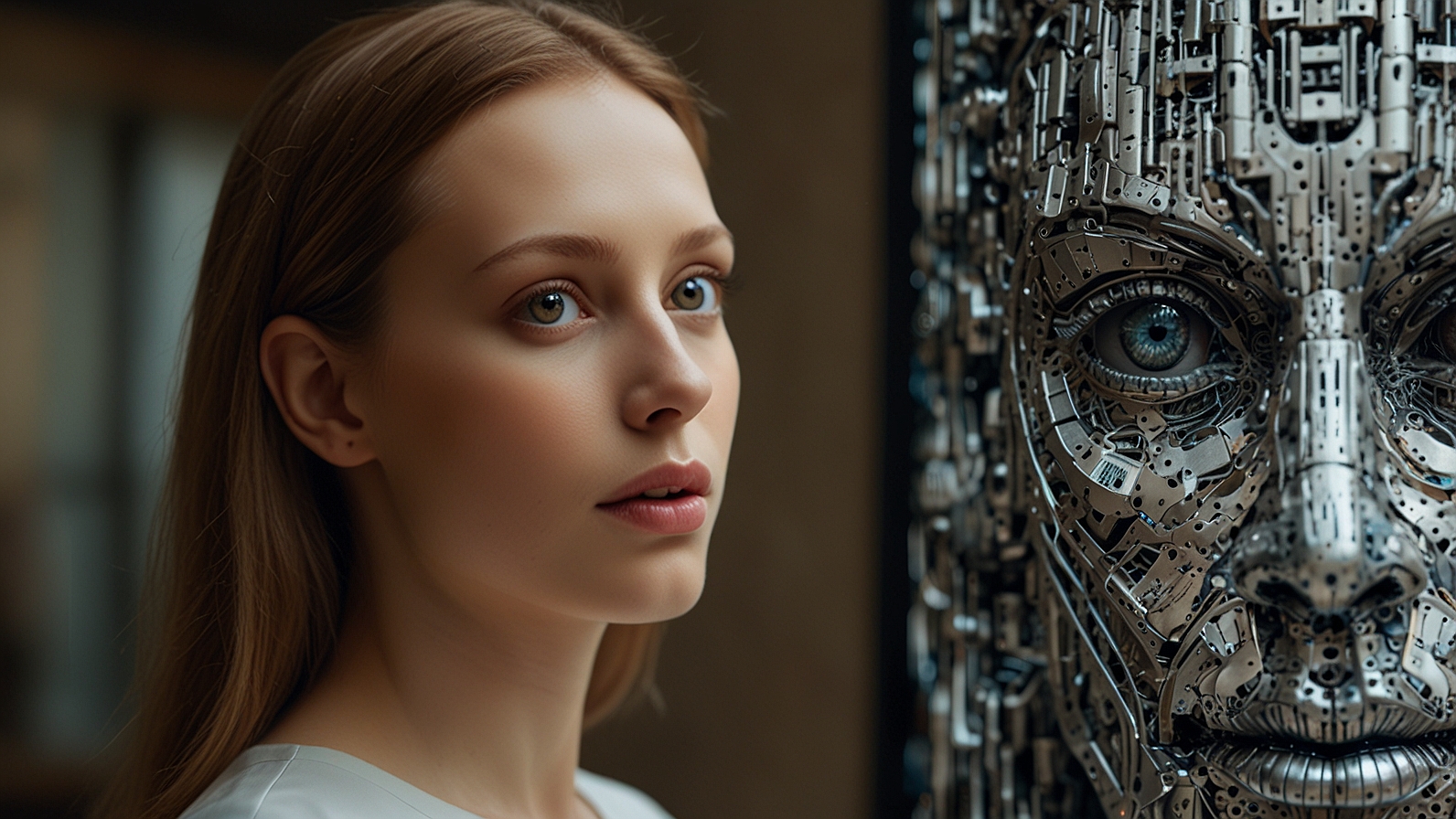The rise of artificial intelligence (AI) has transformed nearly every aspect of modern life, from self-driving cars to automated customer service. One area where AI’s influence is being keenly felt is in the realm of creativity. AI-powered tools are now capable of generating music, paintings, poems, and even entire novels, leading many to question whether machines can replace human artists. While some argue that AI could one day fully replace human creativity, others believe that machines can only serve as a complement to human ingenuity, opening up new possibilities for collaboration rather than competition.
The Role of AI in Creative Industries
AI has made remarkable strides in the creative industries, enabling artists, musicians, writers, and designers to explore new avenues of expression. Through the use of machine learning algorithms, AI can now analyze vast amounts of data and generate original works based on patterns, trends, and inputs. Tools like OpenAI’s GPT-3 can generate text that mimics human writing, while AI programs like DALL·E can create visuals from textual descriptions.
In music, AI systems like Jukedeck and Aiva (Artificial Intelligence Virtual Artist) can compose original pieces based on the artist’s preferences, producing symphonies and pop songs with little to no human intervention. In the world of visual arts, AI is already being used to create paintings, digital art, and design prototypes. One famous example is the AI-created artwork “Edmond de Belamy,” which sold at auction for $432,500, highlighting the growing demand for AI-generated art.
Can AI Truly Replace Human Artists?
While AI is undeniably impressive in its creative output, the question remains: can machines truly replace human artists? The answer is more complex than a simple yes or no.
- Human Emotion and Intent
One of the key elements of human-created art is the emotion and intent behind it. Artists create with purpose, often reflecting their personal experiences, social commentary, or a desire to communicate a message. While AI can mimic style and produce works that appear visually appealing or sonically interesting, it lacks the ability to express authentic human emotion or engage in the deeply personal creative process that humans do. Art is often a reflection of the human condition, and this emotional depth is something that AI struggles to replicate. - Originality and Innovation
Many human artists strive for originality and innovation, creating works that challenge societal norms, provoke thought, or explore new artistic frontiers. AI, on the other hand, works by analyzing data and producing output based on pre-existing patterns. While it can generate new combinations of ideas, it does not create entirely original concepts in the way that humans do. The human ability to take risks, experiment, and invent entirely new forms of expression remains a critical aspect of creativity that AI has yet to master. - Collaboration Rather Than Replacement
Rather than replacing human artists, AI may serve as a powerful tool to enhance and complement their work. AI can assist artists by automating tedious tasks, offering new ideas, or suggesting creative directions. For example, in the world of graphic design, AI can generate quick mockups or layouts, leaving the artist to focus on refining the concepts and adding their personal touch. Musicians can use AI tools to generate backing tracks or explore new musical styles, which they can then mold into something uniquely their own.
Additionally, AI can act as a collaborator. Artists like Refik Anadol and Mario Klingemann are already using AI in their works, blending human creativity with machine learning algorithms to create interactive installations and immersive experiences. By incorporating AI into their artistic process, these artists are exploring new frontiers of creativity that would not have been possible without the technology.
Ethics and Implications of AI in Art
As AI continues to play a larger role in creative fields, several ethical questions arise. One of the most prominent concerns is the question of authorship. Who owns the rights to an AI-generated artwork? Is it the machine that created it, the developer who programmed it, or the person who provided the initial input? This issue has sparked debates within the art world, with some arguing that AI-generated works should be treated like human-created art, while others believe they should be classified differently.
Another concern is the potential for AI to replace human jobs in creative fields. As AI tools become more accessible, some fear that it could lead to job displacement for artists, designers, writers, and musicians. However, many experts argue that AI will enhance the creative process rather than replace it, with artists using the technology to push their own boundaries rather than being replaced by it.
Looking Forward: A New Era of Creative Collaboration
The future of AI in the creative industries is an exciting one. While AI may never fully replace human artists, it is clear that it will continue to be a valuable tool for pushing the boundaries of creativity. Instead of fearing that AI will take over, artists and creators are embracing it as a partner in the creative process, exploring new ways to collaborate with machines and augment their own abilities.
Ultimately, AI’s role in creativity is not about replacing human talent but about expanding the possibilities for what art can be. Whether it’s generating new forms of music, art, or literature, AI is providing artists with fresh tools for self-expression and a broader canvas for their imagination. In this sense, AI in creativity is not a threat to human artistry but an opportunity for a new era of collaborative innovation—where human creativity and machine intelligence work hand in hand to create the future of art.





